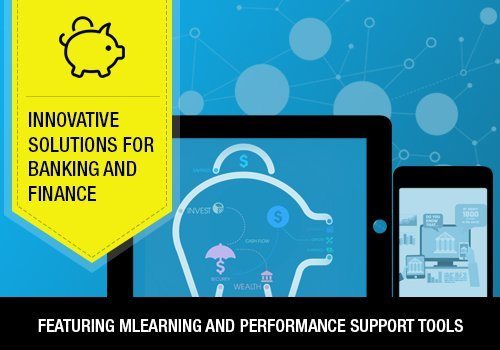How To Improve Financial Services Training
Is it time for your financial services organization to revisit its Learning and Development plans? No doubt you are aware of many ripples impacting your industry today: Cybersecurity concerns, changing regulations and tax policies, and an increasingly digital landscape.
And that’s just the beginning. I wonder which of these challenges are keeping you up at night.
Do You Ever Wonder How Training Can Help?
Training is not a standalone solution to meet all these industry challenges, but it can play a vital role in bridging the gap between where you are now, and where you want to be. Once you have a roadmap for addressing a challenge, the next step is to use a targeted, competency-based approach to help your employees implement it. The goal here is to create training that transforms their behaviors in the workplace, instead of simply transferring new information to them.
How Can You Develop Competency-Based Learning Programs?
The basic tenets for impacting workforce behavior through competency-based training remain the same, regardless of industry. Follow this 3-step process:
- Conduct analysis to define and compare your organization’s current and ideal states, and explore solutions for bridging gaps and building on strengths.
- Use an agile development process to create learning assets for each competency.
- Offer post-training support and accountability measures or incentives to help staff apply what they learned to their work.
Let’s dive deeper into how this 3-step process can be applied in the financial services industry.
Step 1: Conduct Analysis To Define And Compare Your Organization’s Current And Ideal States And Explore Solutions For Bridging Gaps And Building On Strengths.
Performance analysis does not have to be long and complicated, but if you want to trigger real change, it does need to be done. Use simple open-ended questions to gather feedback via interviews, focus groups, and surveys. Here are a few examples:
- What are your biggest challenges with [insert performance measure], and why?
- How would a solution to this problem help you?
- How difficult has it been to find a solution to this challenge?
- In an ideal situation, how would [insert performance measure] work?
Once you have collected feedback, you’ll start noticing trends. Identify the most common and critical issues and brainstorm solutions for addressing them. Most likely, training will be at least part of the equation.
Next, list the competencies your staff needs to develop to implement your solutions. Use your LMS to assign those competencies to your staff, based on factors like job titles, responsibilities, and geographic locations.
Step 2: Use An Agile Development Process To Create Learning Assets For Each Competency.
For each competency, develop a microlearning asset (typically 5–10 minutes) that financial services professionals can complete as their busy schedules allow. During the design phase, decide whether the learning assets should be completed in sequence, whether they should build on each other, or if they should be able to stand alone.
Use a varied mix of media including mini eLearning modules, infographics, video, interactions, and audio. Variation not only helps boost engagement levels, but it also helps address the various learning needs and preferences of your target audience.
Remember, the benefit of microlearning is that learners can get the most out of their limited time for training. Don’t just share useful information; make the concepts come alive and give them opportunities for practice and feedback. Consider these tips, for instance:
- Start Off Strong
In keeping with Keller’s ARCS Model of Motivation, you’ll want your learning assets to attract your learners’ attention, include relevant content, build their confidence to complete essential tasks, and provide satisfying interactions and experiences. If your learners are alert at the start of a learning sequence, they are more likely to stay engaged with your course. When it comes to learner motivation, first impressions matter. - Include Realistic Scenarios
For each competency, emphasize the "why" behind what you are asking your financial services workers to do. For instance, if the training is about the life of a loan, introduce a couple who is going through the mortgage process for the first time, from cradle to grave, and address their likely questions. Visualizing what concepts look like in real life helps learners retain knowledge and apply skills to their work. - Build Opportunities For Practice And Feedback
Have you ever heard the phrase, "practice makes perfect"? That is only partially true. The statement would be much improved by saying "perfect practice makes perfect". The difference here is that your learners, especially your online learners who are often removed from live help, can practice all day long without improving. Learners need constructive feedback to ensure they are practicing correctly; otherwise, they are simply building bad habits that may be hard to break down the line.
If possible, pilot your learning assets before rolling them out to your full target audience. Use this opportunity to test and improve your training to boost job performance.
Step 3: Offer Post-Training Support And Accountability Measures Or Incentives To Help Staff Apply What They Learned To Their Work.
Post-training support can take many forms, such as job aids, curated content banks, and coaching. The type of support your learners need depends on the content and the risks involved. In addition to performance support, consider adding accountability measures or incentives to motivate staff and their leaders to implement key changes and integrate them into their habits.
In short, financial services professionals are faced with a variety of struggles, but a competency-based training program can be part of the solution for overcoming modern industry challenges. Follow the process outlined in this article to trigger performance change, one competency at a time. Line upon line, learners can achieve the performance needed to meet the complex demands of the financial services industry.









